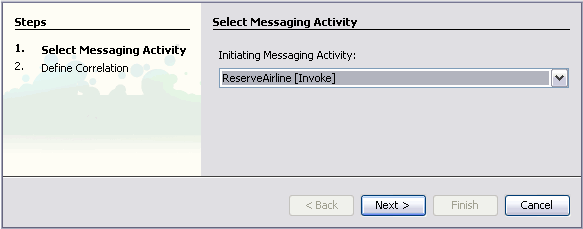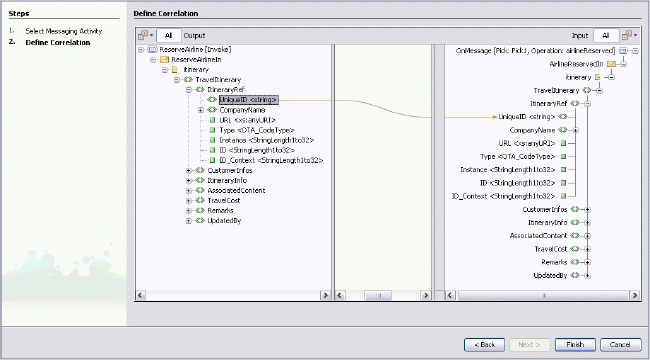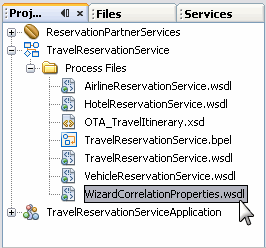 To create correlation using the Correlation Wizard:
To create correlation using the Correlation Wizard:
-
In the Design view, right click the activity that requires correlation and choose Define Correlation.
The Correlation Wizard opens. If correlation is required for an activity, the Designer places a warning icon on the diagram.

-
In the Correlation wizard, select the messaging activity. From the drop-down list choose an initiating messaging activity. The activity chosen here initiates the correlation set. Click Next.

-
For Step 2 of the wizard, define the correlation. In the Output pane (left pane) of the wizard the tree structure represents the message that the initiating activity sends or receives. In the Input pane (right pane) The tree structure represents the message passed by the correlating activity.
Connect the messages parts that define correlation by selecting the node in the Output (source) pane and dragging your cursor to the appropriate node in the Input (destination) pane.

-
Once the correlation is set, the wizard creates properties and property aliases in a WSDL file, defines a correlation set in the BPEL file, and associates the correlation set with the activities you selected.
Note that properties and property aliases are written to a new WSDL file that you can see among the process files of the BPEL Module. The original WSDL file for the partner service is imported to the new WSDL. For all correlation created using the wizard, both properties and property aliases are written to this file. Partner WSDL files are imported. The correlation set defined in the BPEL file refers to the new WSDL.

- © 2010, Oracle Corporation and/or its affiliates
